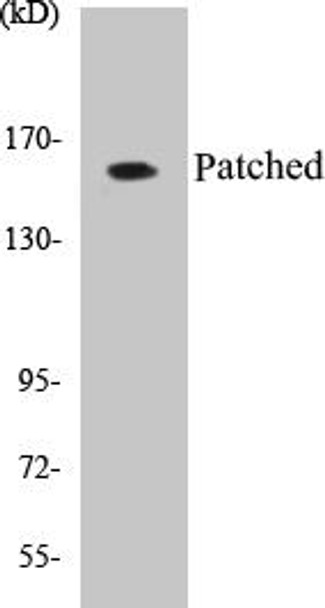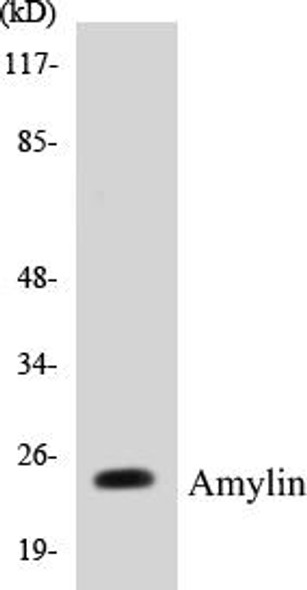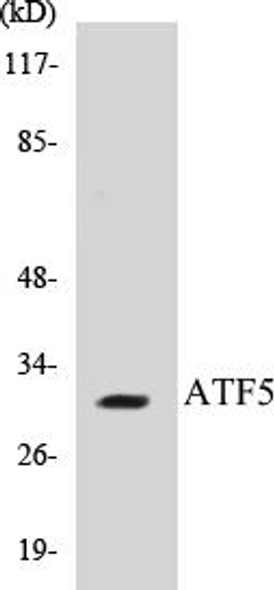Description
Patched Colorimetric Cell-Based ELISA Kit
The Patched Colorimetric Cell-Based ELISA Kit offered by AssayGenie is a powerful tool for researchers looking to accurately detect and quantify protein levels in cell culture supernatants. With its high sensitivity and specificity, this kit guarantees reliable and reproducible results, making it the perfect choice for a variety of experimental settings.Specifically designed to measure protein levels in cell culture systems, this kit provides researchers with valuable insights into cellular processes and signaling pathways. Whether studying protein expression in cancer cells, testing drug efficacy in cell-based assays, or exploring the mechanisms of cellular communication, the Patched Colorimetric Cell-Based ELISA Kit offers unparalleled precision and accuracy.
With its user-friendly protocol and comprehensive instructions, this kit is suitable for both experienced researchers and beginners in the field. Trust AssayGenie to deliver top-quality products that meet the highest standards of performance and reliability. Elevate your research with the Patched Colorimetric Cell-Based ELISA Kit from AssayGenie today.
| Product Name: | Patched Colorimetric Cell-Based ELISA Kit |
| Product Code: | CBCAB00346 |
| ELISA Type: | Cell-Based |
| Target: | Patched |
| Reactivity: | Human, Mouse |
| Dynamic Range: | > 5000 Cells |
| Detection Method: | Colorimetric 450 nmStorage/Stability:4°C/6 Months |
| Format: | 96-Well Microplate |
The Patched Colorimetric Cell-Based ELISA Kit is a convenient, lysate-free, high throughput and sensitive assay kit that can detect Patched protein expression profile in cells. The kit can be used for measuring the relative amounts of Patched in cultured cells as well as screening for the effects that various treatments, inhibitors (ie siRNA or chemicals), or activators have on Patched.
Qualitative determination of Patched concentration is achieved by an indirect ELISA format. In essence, Patched is captured by Patched-specific primary antibodies while the HRP-conjugated secondary antibodies bind the Fc region of the primary antibody. Through this binding, the HRP enzyme conjugated to the secondary antibody can catalyze a colorimetric reaction upon substrate addition. Due to the qualitative nature of the Cell-Based ELISA, multiple normalization methods are needed:
| 1. | A monoclonal antibody specific for human GAPDH is included to serve as an internal positive control in normalizing the target absorbance values. |
| 2. | Following the colorimetric measurement of HRP activity via substrate addition, the Crystal Violet whole-cell staining method may be used to determine cell density. After staining, the results can be analysed by normalizing the absorbance values to cell amounts, by which the plating difference can be adjusted. |
| Database Information: | Gene ID: 5727, UniProt ID: Q13635, OMIM: 601309, Unigene: Hs.494538/Hs.638946 |
| Gene Symbol: | PTCH1 |
| Sub Type: | None |
| UniProt Protein Function: | PTCH1: a multi-pass membrane protein member of the ?patched? family that acts as a receptor for sonic hedgehog (SHH), indian hedgehog (IHH) and desert hedgehog (DHH). Associates with the smoothened protein (SMO) to transduce the hedgehog protein?s signal. Seems to have a tumor suppressor function, as inactivation of this protein is probably a necessary, if not sufficient step for tumorigenesis. Interacts with SNX17. Expressed in tumor cells but not in normal skin. In the embryo, found in all major target tissues of sonic hedgehog, such as the ventral neural tube, somites, and tissues surrounding the zone of polarizing activity of the limb bud. Defects in PTCH1 are the cause of basal cell nevus syndrome (BCNS), also known as Gorlin syndrome. BCNS is an autosomal dominant disease characterized by nevoid basal cell carcinomas and developmental abnormalities such as rib and craniofacial alterations, polydactyly, syndactyly, and spina bifida. In addition, the patients suffer from a multitude of tumors like basal cell carcinomas, fibromas of the ovaries and heart, cysts of the skin, jaws and mesentery, as well as medulloblastomas and meningiomas. PTCH1 defects is also the cause of holoprosencephaly, the most common structural anomaly of the brain, in which the developing forebrain fails to correctly separate into right and left hemispheres. |
| UniProt Protein Details: | Protein type:Cell cycle regulation; Tumor suppressor; Membrane protein, integral; Membrane protein, multi-pass Chromosomal Location of Human Ortholog: 9q22.3 Cellular Component: Golgi apparatus; intracellular membrane-bound organelle; perinuclear region of cytoplasm; postsynaptic density; integral to membrane; plasma membrane; caveola; midbody Molecular Function:heparin binding; cyclin binding; protein binding; hedgehog receptor activity; cholesterol binding; protein complex binding; patched binding; smoothened binding Biological Process: heart morphogenesis; hindlimb morphogenesis; epidermis development; regulation of mitotic cell cycle; negative regulation of transcription from RNA polymerase II promoter; glucose homeostasis; response to estradiol stimulus; response to chlorate; regulation of protein localization; negative regulation of osteoblast differentiation; negative regulation of epithelial cell proliferation; embryonic limb morphogenesis; response to drug; smoothened signaling pathway; response to retinoic acid; negative regulation of multicellular organism growth; pharyngeal system development; in utero embryonic development; negative regulation of transcription factor activity; neural tube patterning; negative regulation of cell division; keratinocyte proliferation; spinal cord motor neuron differentiation; limb morphogenesis; organ morphogenesis; dorsal/ventral pattern formation; response to mechanical stimulus; ureteric bud branching; negative regulation of smoothened signaling pathway; neural plate pattern formation; neural tube closure; embryonic organ development; protein processing; brain development; regulation of smoothened signaling pathway Disease: Holoprosencephaly 7; Basal Cell Nevus Syndrome; Basal Cell Carcinoma, Susceptibility To, 1 |
| NCBI Summary: | This gene encodes a member of the patched family of proteins and a component of the hedgehog signaling pathway. Hedgehog signaling is important in embryonic development and tumorigenesis. The encoded protein is the receptor for the secreted hedgehog ligands, which include sonic hedgehog, indian hedgehog and desert hedgehog. Following binding by one of the hedgehog ligands, the encoded protein is trafficked away from the primary cilium, relieving inhibition of the G-protein-coupled receptor smoothened, which results in activation of downstream signaling. Mutations of this gene have been associated with basal cell nevus syndrome and holoprosencephaly. [provided by RefSeq, Aug 2017] |
| UniProt Code: | Q13635 |
| NCBI GenInfo Identifier: | 134254446 |
| NCBI Gene ID: | 5727 |
| NCBI Accession: | NP_000255.2 |
| UniProt Related Accession: | Q13635 |
| Molecular Weight: | ~ 160kDa |
| NCBI Full Name: | protein patched homolog 1 isoform L |
| NCBI Synonym Full Names: | patched 1 |
| NCBI Official Symbol: | PTCH1 |
| NCBI Official Synonym Symbols: | PTC; BCNS; PTC1; PTCH; NBCCS |
| NCBI Protein Information: | protein patched homolog 1 |
| UniProt Protein Name: | Protein patched homolog 1 |
| Protein Family: | Protein |
| UniProt Gene Name: | PTCH1 |
| UniProt Entry Name: | PTC1_HUMAN |
| Component | Quantity |
| 96-Well Cell Culture Clear-Bottom Microplate | 2 plates |
| 10X TBS | 24 mL |
| Quenching Buffer | 24 mL |
| Blocking Buffer | 50 mL |
| 15X Wash Buffer | 50 mL |
| Primary Antibody Diluent | 12 mL |
| 100x Anti-Phospho Target Antibody | 60 µL |
| 100x Anti-Target Antibody | 60 µL |
| Anti-GAPDH Antibody | 60 µL |
| HRP-Conjugated Anti-Rabbit IgG Antibody | 12 mL |
| HRP-Conjugated Anti-Mouse IgG Antibody | 12 mL |
| SDS Solution | 12 mL |
| Stop Solution | 24 mL |
| Ready-to-Use Substrate | 12 mL |
| Crystal Violet Solution | 12 mL |
| Adhesive Plate Seals | 2 seals |
The following materials and/or equipment are NOT provided in this kit but are necessary to successfully conduct the experiment:
- Microplate reader able to measure absorbance at 450 nm and/or 595 nm for Crystal Violet Cell Staining (Optional)
- Micropipettes with capability of measuring volumes ranging from 1 µL to 1 ml
- 37% formaldehyde (Sigma Cat# F-8775) or formaldehyde from other sources
- Squirt bottle, manifold dispenser, multichannel pipette reservoir or automated microplate washer
- Graph paper or computer software capable of generating or displaying logarithmic functions
- Absorbent papers or vacuum aspirator
- Test tubes or microfuge tubes capable of storing ≥1 ml
- Poly-L-Lysine (Sigma Cat# P4832 for suspension cells)
- Orbital shaker (optional)
- Deionized or sterile water
*Note: Protocols are specific to each batch/lot. For the correct instructions please follow the protocol included in your kit.
| Step | Procedure |
| 1. | Seed 200 µL of 20,000 adherent cells in culture medium in each well of a 96-well plate. The plates included in the kit are sterile and treated for cell culture. For suspension cells and loosely attached cells, coat the plates with 100 µL of 10 µg/ml Poly-L-Lysine (not included) to each well of a 96-well plate for 30 minutes at 37°C prior to adding cells. |
| 2. | Incubate the cells for overnight at 37°C, 5% CO2. |
| 3. | Treat the cells as desired. |
| 4. | Remove the cell culture medium and rinse with 200 µL of 1x TBS, twice. |
| 5. | Fix the cells by incubating with 100 µL of Fixing Solution for 20 minutes at room temperature. The 4% formaldehyde is used for adherent cells and 8% formaldehyde is used for suspension cells and loosely attached cells. |
| 6. | Remove the Fixing Solution and wash the plate 3 times with 200 µL 1x Wash Buffer for five minutes each time with gentle shaking on the orbital shaker. The plate can be stored at 4°C for a week. |
| 7. | Add 100 µL of Quenching Buffer and incubate for 20 minutes at room temperature. |
| 8. | Wash the plate 3 times with 1x Wash Buffer for 5 minutes each time. |
| 9. | Add 200 µL of Blocking Buffer and incubate for 1 hour at room temperature. |
| 10. | Wash 3 times with 200 µL of 1x Wash Buffer for 5 minutes each time. |
| 11. | Add 50 µL of 1x primary antibodies (Anti-Patched Antibody and/or Anti-GAPDH Antibody) to the corresponding wells, cover with Parafilm and incubate for 16 hours (overnight) at 4°C. If the target expression is known to be high, incubate for 2 hours at room temperature. |
| 12. | Wash 3 times with 200 µL of 1x Wash Buffer for 5 minutes each time. |
| 13. | Add 50 µL of 1x secondary antibodies (HRP-Conjugated AntiRabbit IgG Antibody or HRP-Conjugated Anti-Mouse IgG Antibody) to corresponding wells and incubate for 1.5 hours at room temperature. |
| 14. | Wash 3 times with 200 µL of 1x Wash Buffer for 5 minutes each time. |
| 15. | Add 50 µL of Ready-to-Use Substrate to each well and incubate for 30 minutes at room temperature in the dark. |
| 16. | Add 50 µL of Stop Solution to each well and read OD at 450 nm immediately using the microplate reader. |
(Additional Crystal Violet staining may be performed if desired – details of this may be found in the kit technical manual.)






